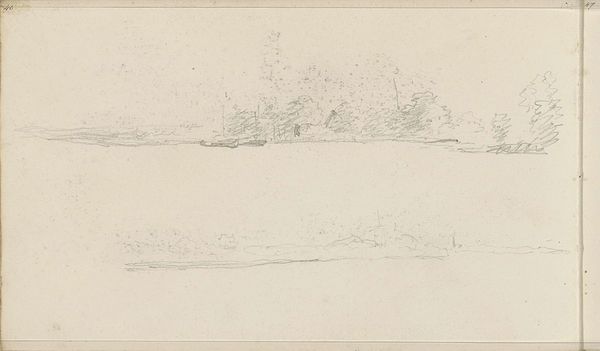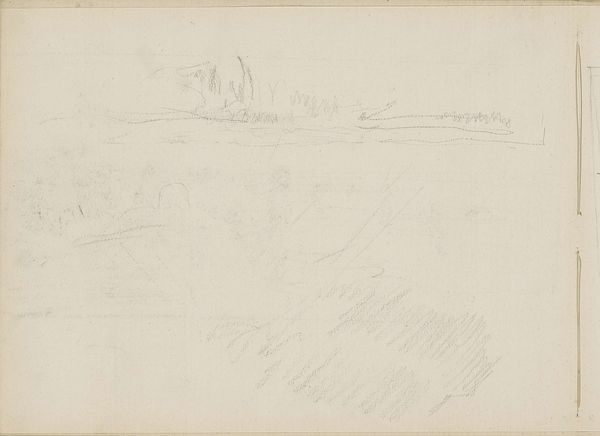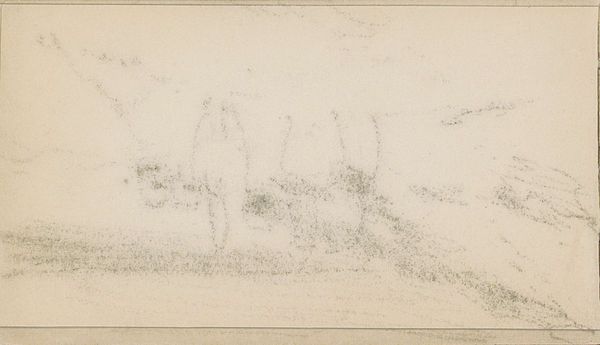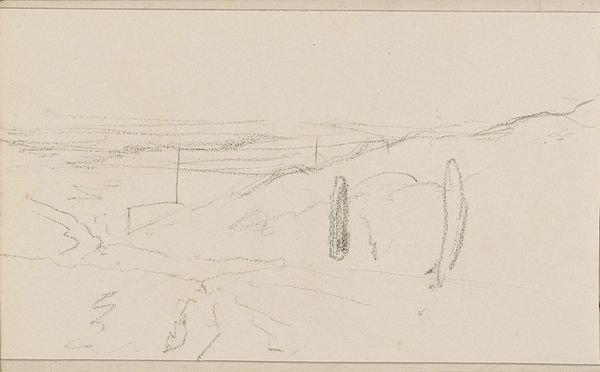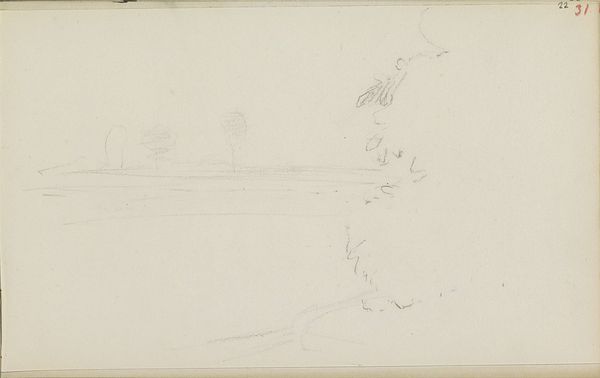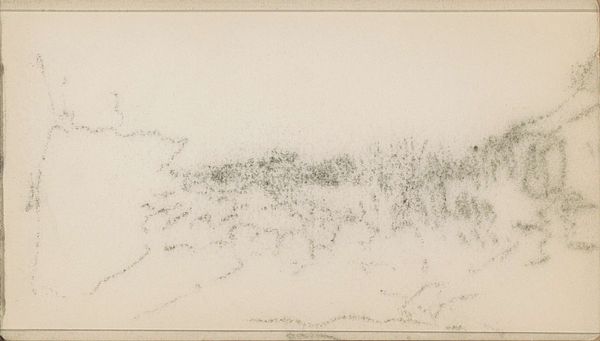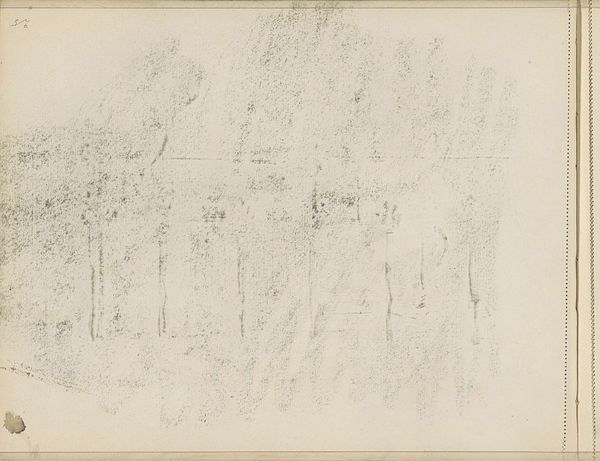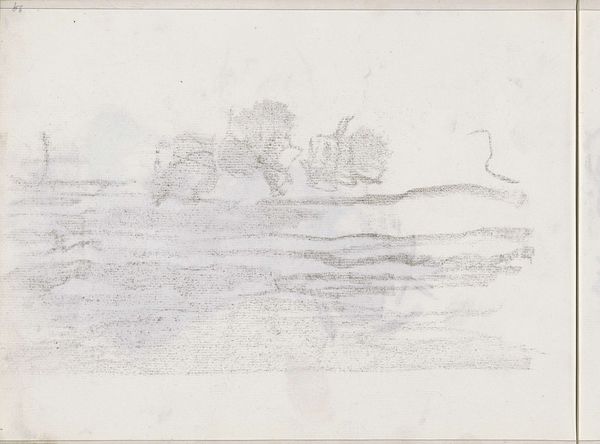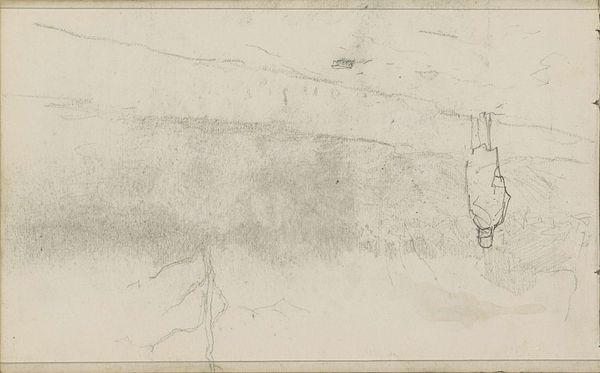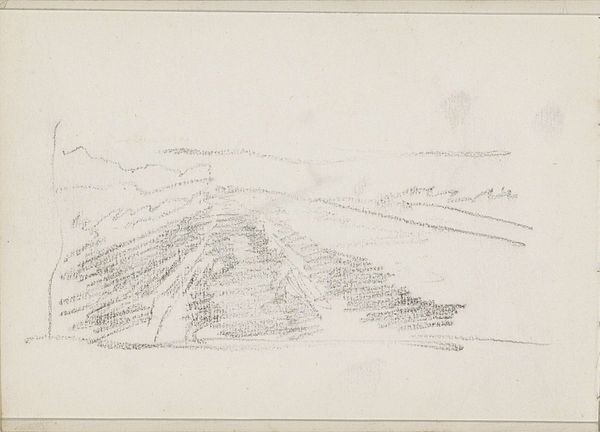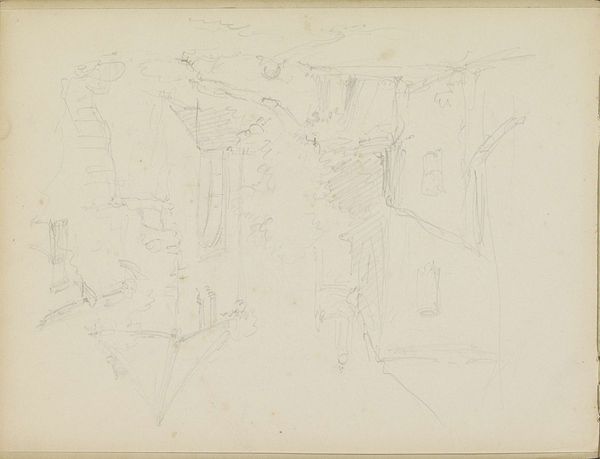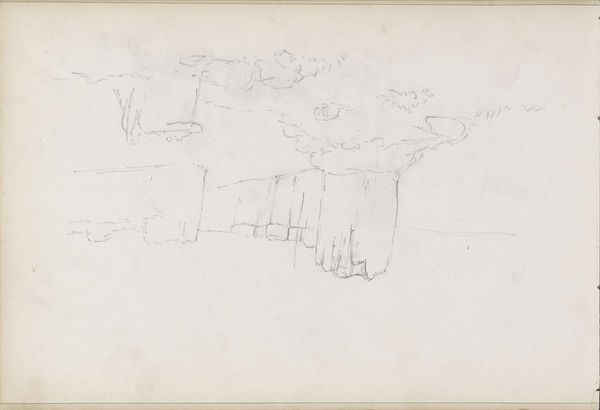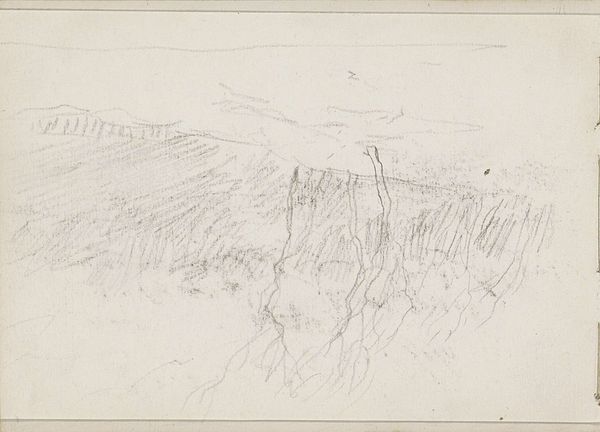
drawing, pencil, graphite
#
drawing
#
pencil sketch
#
landscape
#
pencil
#
abstraction
#
graphite
Copyright: Rijks Museum: Open Domain
Editor: So this intriguing piece is called "Abklatsch van de krijttekening op pagina 20," which translates to something like "Impression of a Chalk Drawing on Page 20." It’s by Isaac Israels, created sometime between 1875 and 1934, using pencil and graphite. Honestly, at first glance, it's a bit…ghostly. Very faint and dreamlike. What do you see in this, beyond the hazy outlines? Curator: Ah, yes, a whispering of a landscape, almost a memory of one, caught fleetingly. It’s fascinating how Israels uses the very barest of means – the humble pencil – to suggest so much. To me, it’s not about what’s there, but what isn’t. The negative space becomes almost as important as the lines themselves, wouldn't you agree? Editor: I think I agree, but can you elaborate on the negative space being so important? Curator: Think of it like this: the sketch is just the seed. Our minds fill in the rest. That empty space invites our own experiences and imagination to complete the picture. Is it a harbor? A field at dawn? What season do *you* feel when you look at it? It could be winter – barren, sparse… it is a very internal kind of image, right? A thought made visible, before the thought is fully formed. Editor: That’s beautiful. I was so focused on what *was* there, I hadn't really considered the power of suggestion. Now it feels less ghostly and more… potential. Curator: Exactly! Art isn’t always about answers, sometimes it's more beautiful and meaningful when it just hands us a key and says, "Unlock this yourself." It's almost playful. What do you feel like unlocking now? Editor: Now, I want to go try sketching like this, to capture a half-formed idea before it solidifies. Thank you! Curator: Wonderful! It’s amazing where a simple sketch can take us, isn't it? To new perspectives, even new artistic practices.
Comments
No comments
Be the first to comment and join the conversation on the ultimate creative platform.
